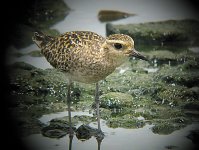ostling41
registered user
Those of us who have tried digiscoping with the Canon G7 or G9 are well aware of the difficulty imposed by the design of the 35-210mm lens. The entrance pupil of this lens moves aft when the lens is zoomed to the telephoto end of the range. Significant vignetting results.
Virtually all the cameras good for digiscoping have a zoom lens wherein the entrance pupil moves forward during zooming. This allows using the lens at a mid-range telephoto setting without vignetting, just what is needed for most bird photography.
The G10 has a new lens, a 28-140mm. Does it display the same "adverse" pupil movement as the 35-210mm? If not, we might have a real contender for a good digiscoping camera, with RAW.
This can be determined by anybody who has seen a G10 in a camera store. I await a report.
Virtually all the cameras good for digiscoping have a zoom lens wherein the entrance pupil moves forward during zooming. This allows using the lens at a mid-range telephoto setting without vignetting, just what is needed for most bird photography.
The G10 has a new lens, a 28-140mm. Does it display the same "adverse" pupil movement as the 35-210mm? If not, we might have a real contender for a good digiscoping camera, with RAW.
This can be determined by anybody who has seen a G10 in a camera store. I await a report.




